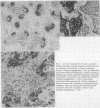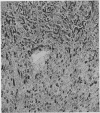Abstract
The distribution in paraffin fixed human tissues of a carbohydrate antigen defined by two monoclonal antibodies raised against human granulocytes has been studied by means of an immunoperoxidase technique. In addition to granulocytes, the antigen has been detected in adult tissues on identifiable cell types of the stomach, kidney, adrenal medulla, and brain and on the mucins of the gastrointestinal tract and other secretions. In fetal tissue, epithelial cells of the alimentary tract, lung, brain, and kidney express the antigen. Adenocarcinoma of the colon, stomach, breast, and lung are stained strongly, as are other types of lung cancer. The monoclonal antibodies give a staining pattern similar but not identical to other monoclonal antibodies raised against granulocytes or neoplastic cell lines which recognise the antigen 3-fucosyl N-acetyllactosamine. The use of antibodies against this oncofetal antigen in the study of differentiation and as tumour markers is discussed.
Full text
PDF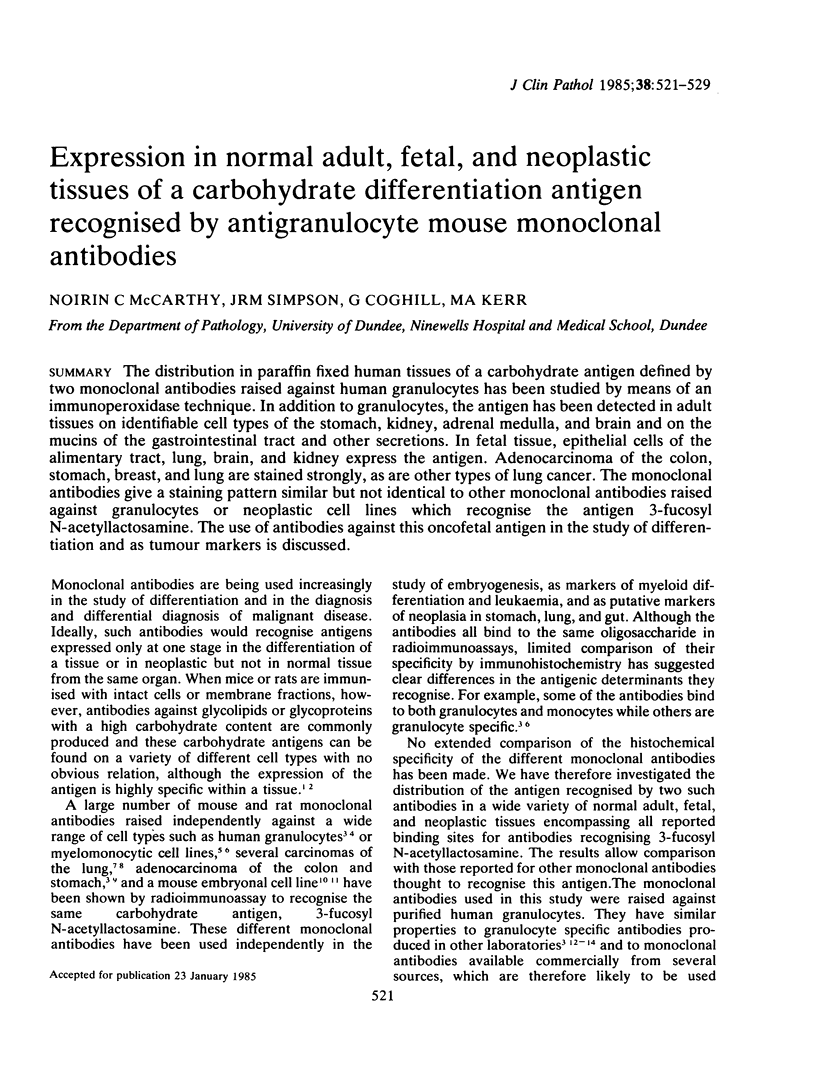
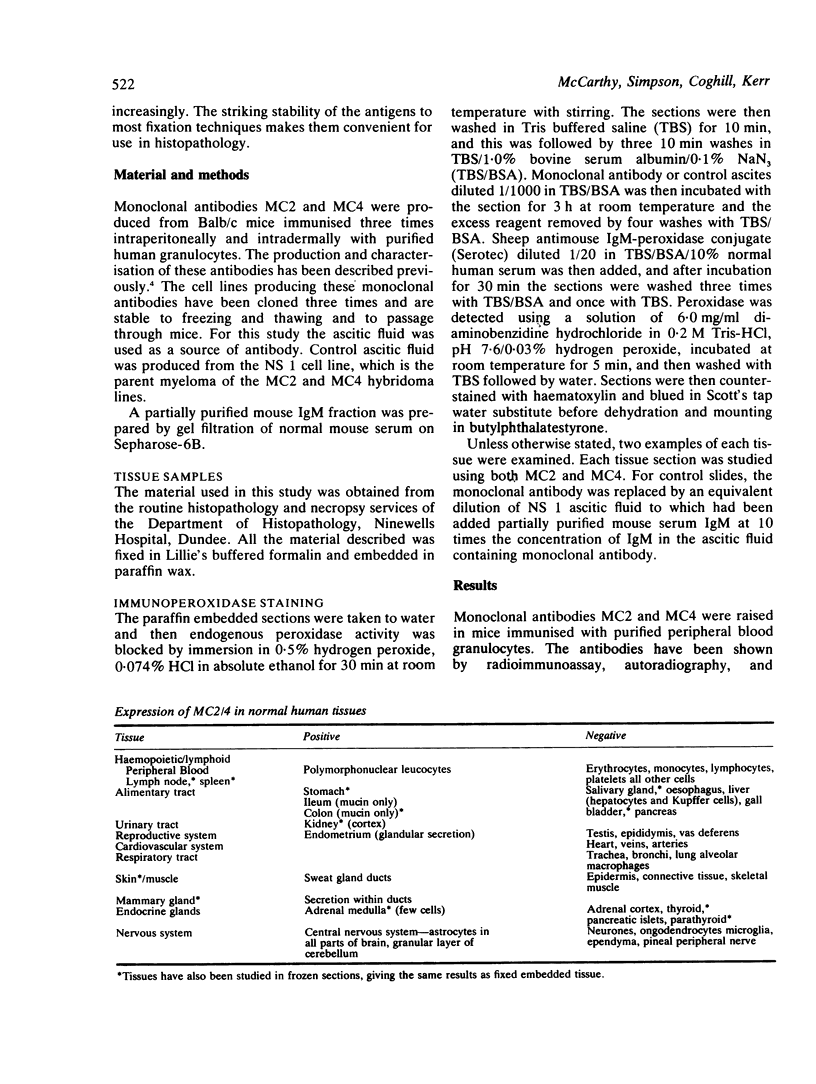
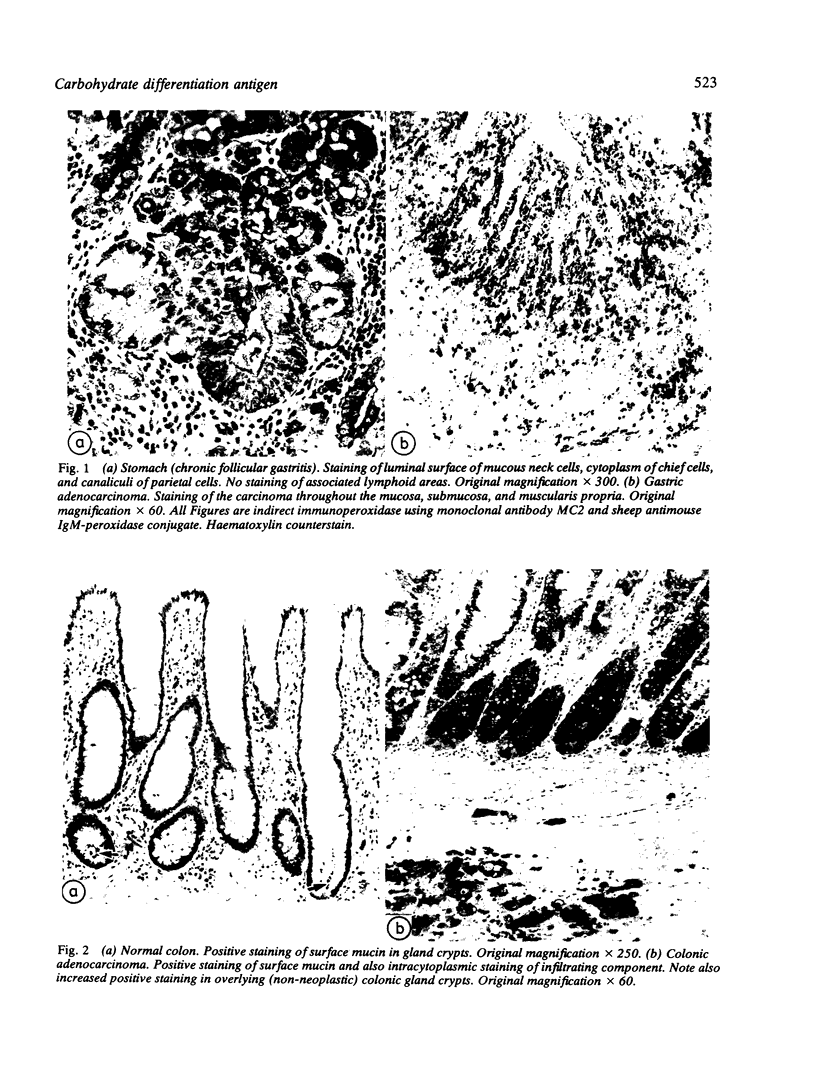
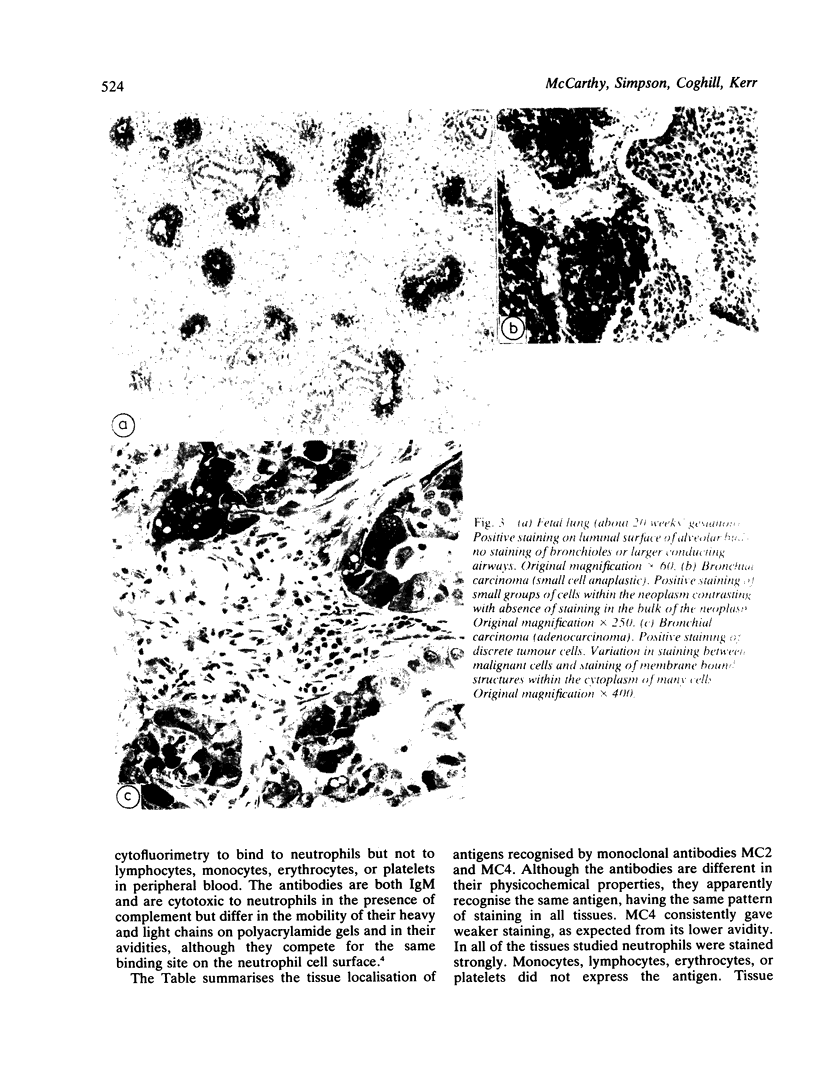
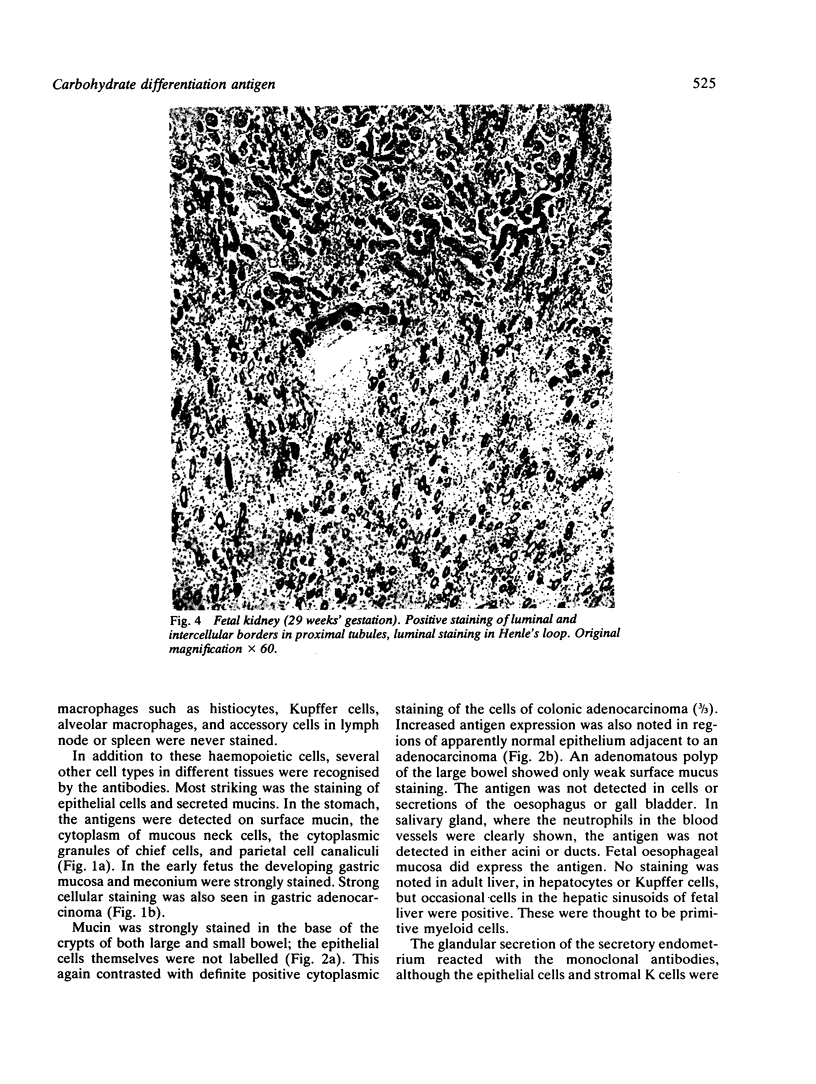
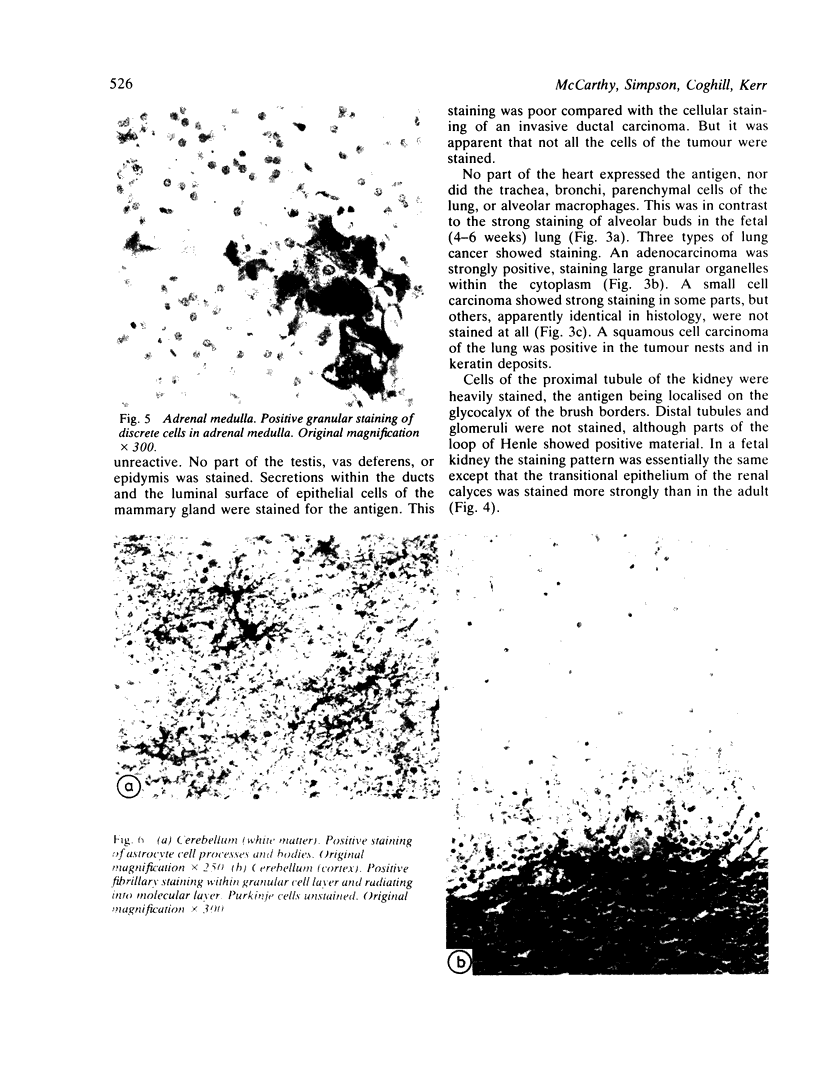
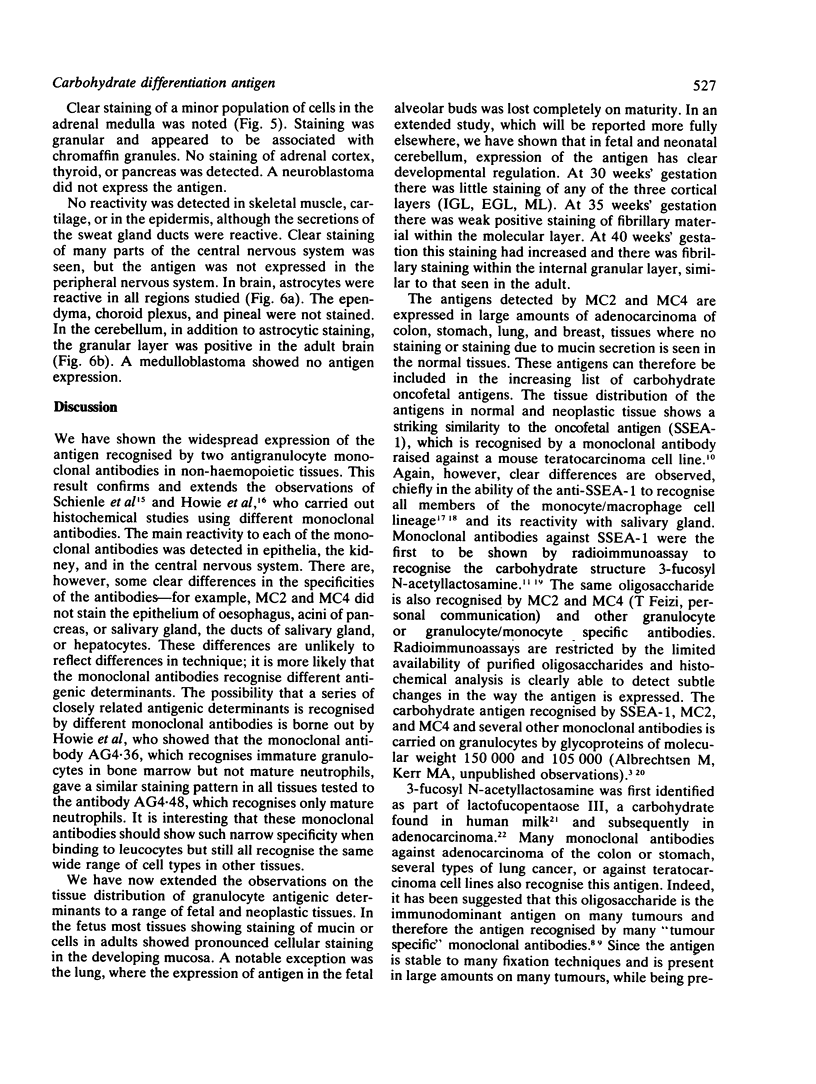
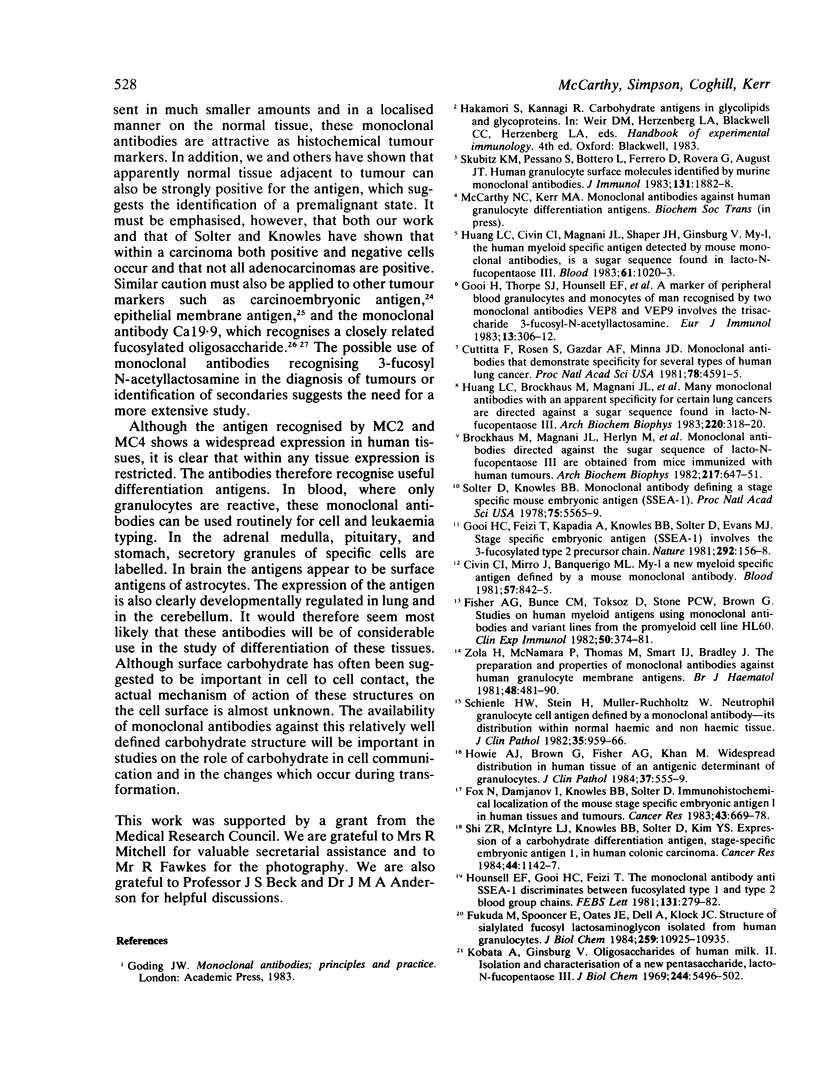
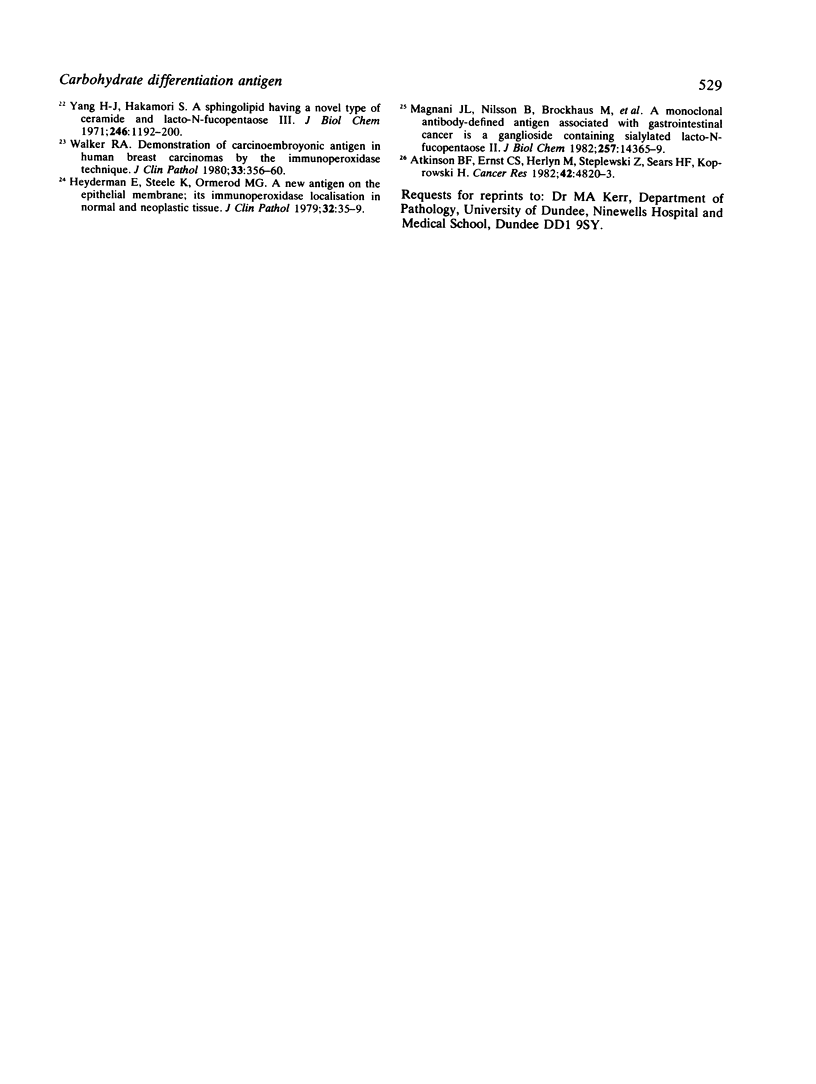
Images in this article
Selected References
These references are in PubMed. This may not be the complete list of references from this article.
- Atkinson B. F., Ernst C. S., Herlyn M., Steplewski Z., Sears H. F., Koprowski H. Gastrointestinal cancer-associated antigen in immunoperoxidase assay. Cancer Res. 1982 Nov;42(11):4820–4823. [PubMed] [Google Scholar]
- Brockhaus M., Magnani J. L., Herlyn M., Blaszczyk M., Steplewski Z., Koprowski H., Ginsburg V. Monoclonal antibodies directed against the sugar sequence of lacto-N-fucopentaose III are obtained from mice immunized with human tumors. Arch Biochem Biophys. 1982 Sep;217(2):647–651. doi: 10.1016/0003-9861(82)90546-x. [DOI] [PubMed] [Google Scholar]
- Civin C. I., Mirro J., Banquerigo M. L. My-1, new myeloid-specific antigen identified by a mouse monoclonal antibody. Blood. 1981 May;57(5):842–845. [PubMed] [Google Scholar]
- Fisher A. G., Bunce C. M., Toksoz D., Stone P. C., Brown G. Studies of human myeloid antigens using monoclonal antibodies and variant lines from the promyeloid cell line HL60. Clin Exp Immunol. 1982 Nov;50(2):374–381. [PMC free article] [PubMed] [Google Scholar]
- Fox N., Damjanov I., Knowles B. B., Solter D. Immunohistochemical localization of the mouse stage-specific embryonic antigen 1 in human tissues and tumors. Cancer Res. 1983 Feb;43(2):669–678. [PubMed] [Google Scholar]
- Fukuda M., Spooncer E., Oates J. E., Dell A., Klock J. C. Structure of sialylated fucosyl lactosaminoglycan isolated from human granulocytes. J Biol Chem. 1984 Sep 10;259(17):10925–10935. [PubMed] [Google Scholar]
- Gooi H. C., Thorpe S. J., Hounsell E. F., Rumpold H., Kraft D., Förster O., Feizi T. Marker of peripheral blood granulocytes and monocytes of man recognized by two monoclonal antibodies VEP8 and VEP9 involves the trisaccharide 3-fucosyl-N-acetyllactosamine. Eur J Immunol. 1983 Apr;13(4):306–312. doi: 10.1002/eji.1830130407. [DOI] [PubMed] [Google Scholar]
- Heyderman E., Steele K., Ormerod M. G. A new antigen on the epithelial membrane: its immunoperoxidase localisation in normal and neoplastic tissue. J Clin Pathol. 1979 Jan;32(1):35–39. doi: 10.1136/jcp.32.1.35. [DOI] [PMC free article] [PubMed] [Google Scholar]
- Hounsell E. F., Gooi H. C., Feizi T. The monoclonal antibody anti-SSEA-1 discriminates between fucosylated type 1 and type 2 blood group chains. FEBS Lett. 1981 Aug 31;131(2):279–282. doi: 10.1016/0014-5793(81)80384-5. [DOI] [PubMed] [Google Scholar]
- Howie A. J., Brown G., Fisher A. G., Khan M. Widespread distribution in human tissues of an antigenic determinant of granulocytes. J Clin Pathol. 1984 May;37(5):555–559. doi: 10.1136/jcp.37.5.555. [DOI] [PMC free article] [PubMed] [Google Scholar]
- Huang L. C., Brockhaus M., Magnani J. L., Cuttitta F., Rosen S., Minna J. D., Ginsburg V. Many monoclonal antibodies with an apparent specificity for certain lung cancers are directed against a sugar sequence found in lacto-N-fucopentaose III. Arch Biochem Biophys. 1983 Jan;220(1):318–320. doi: 10.1016/0003-9861(83)90417-4. [DOI] [PubMed] [Google Scholar]
- Huang L. C., Civin C. I., Magnani J. L., Shaper J. H., Ginsburg V. My-1, the human myeloid-specific antigen detected by mouse monoclonal antibodies, is a sugar sequence found in lacto-N-fucopentaose III. Blood. 1983 May;61(5):1020–1023. [PubMed] [Google Scholar]
- Kobata A., Ginsburg V. Oligosaccharides of human milk. II. Isolation and characterization of a new pentasaccharide, lacto-N-fucopentaose 3. J Biol Chem. 1969 Oct 25;244(20):5496–5502. [PubMed] [Google Scholar]
- Magnani J. L., Nilsson B., Brockhaus M., Zopf D., Steplewski Z., Koprowski H., Ginsburg V. A monoclonal antibody-defined antigen associated with gastrointestinal cancer is a ganglioside containing sialylated lacto-N-fucopentaose II. J Biol Chem. 1982 Dec 10;257(23):14365–14369. [PubMed] [Google Scholar]
- Schienle H. W., Stein N., Müller-Ruchholtz W. Neutrophil granulocytic cell antigen defined by a monoclonal antibody--its distribution within normal haemic and non-haemic tissue. J Clin Pathol. 1982 Sep;35(9):959–966. doi: 10.1136/jcp.35.9.959. [DOI] [PMC free article] [PubMed] [Google Scholar]
- Shi Z. R., McIntyre L. J., Knowles B. B., Solter D., Kim Y. S. Expression of a carbohydrate differentiation antigen, stage-specific embryonic antigen 1, in human colonic adenocarcinoma. Cancer Res. 1984 Mar;44(3):1142–1147. [PubMed] [Google Scholar]
- Skubitz K. M., Pessano S., Bottero L., Ferrero D., Rovera G., August J. T. Human granulocyte surface molecules identified by murine monoclonal antibodies. J Immunol. 1983 Oct;131(4):1882–1888. [PubMed] [Google Scholar]
- Solter D., Knowles B. B. Monoclonal antibody defining a stage-specific mouse embryonic antigen (SSEA-1). Proc Natl Acad Sci U S A. 1978 Nov;75(11):5565–5569. doi: 10.1073/pnas.75.11.5565. [DOI] [PMC free article] [PubMed] [Google Scholar]
- Walker R. A. Demonstration of carcinoembryonic antigen in human breast carcinomas by the immunoperoxidase technique. J Clin Pathol. 1980 Apr;33(4):356–360. doi: 10.1136/jcp.33.4.356. [DOI] [PMC free article] [PubMed] [Google Scholar]
- Yang H. J., Hakomori S. I. A sphingolipid having a novel type of ceramide and lacto-N-fucopentaose 3. J Biol Chem. 1971 Mar 10;246(5):1192–1200. [PubMed] [Google Scholar]
- Zola H., McNamara P., Thomas M., Smart I. J., Bradley J. The preparation and properties of monoclonal antibodies against human granulocyte membrane antigens. Br J Haematol. 1981 Jul;48(3):481–490. doi: 10.1111/j.1365-2141.1981.tb02740.x. [DOI] [PubMed] [Google Scholar]





